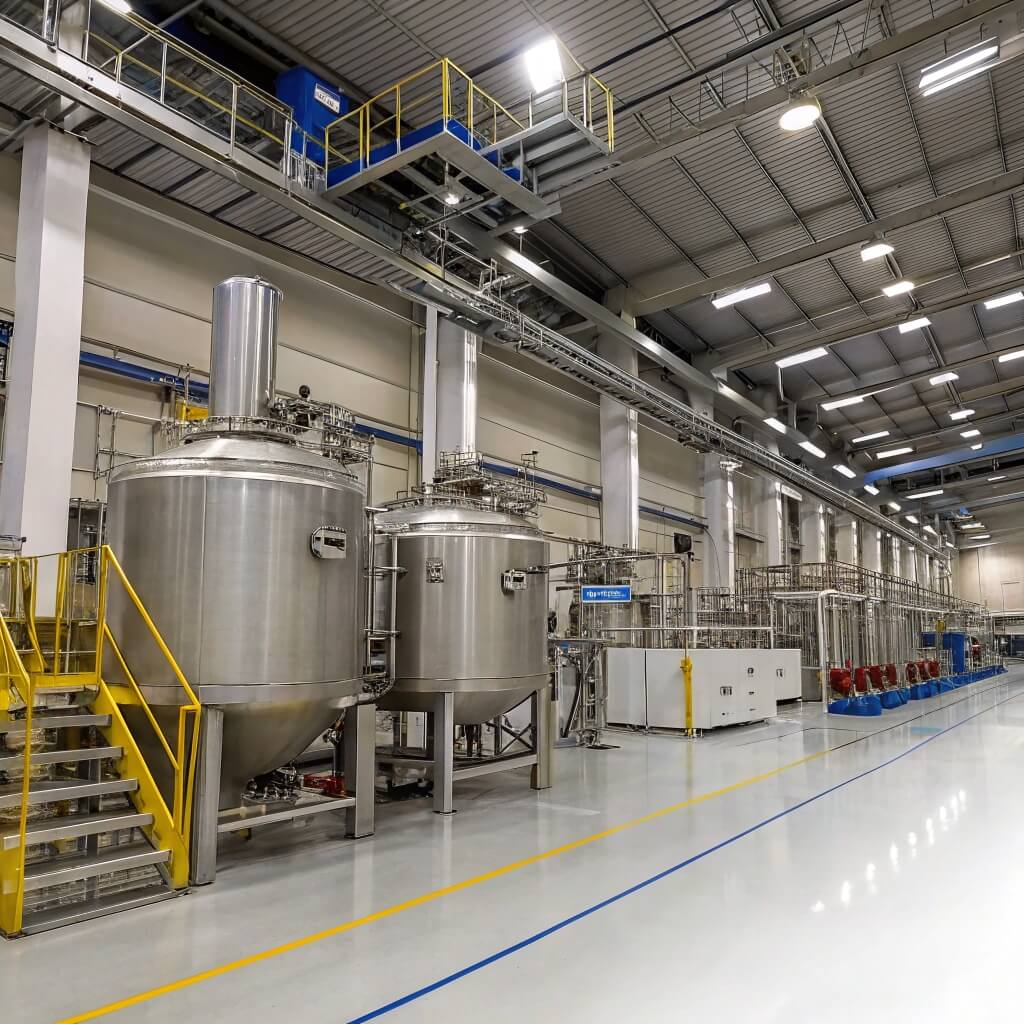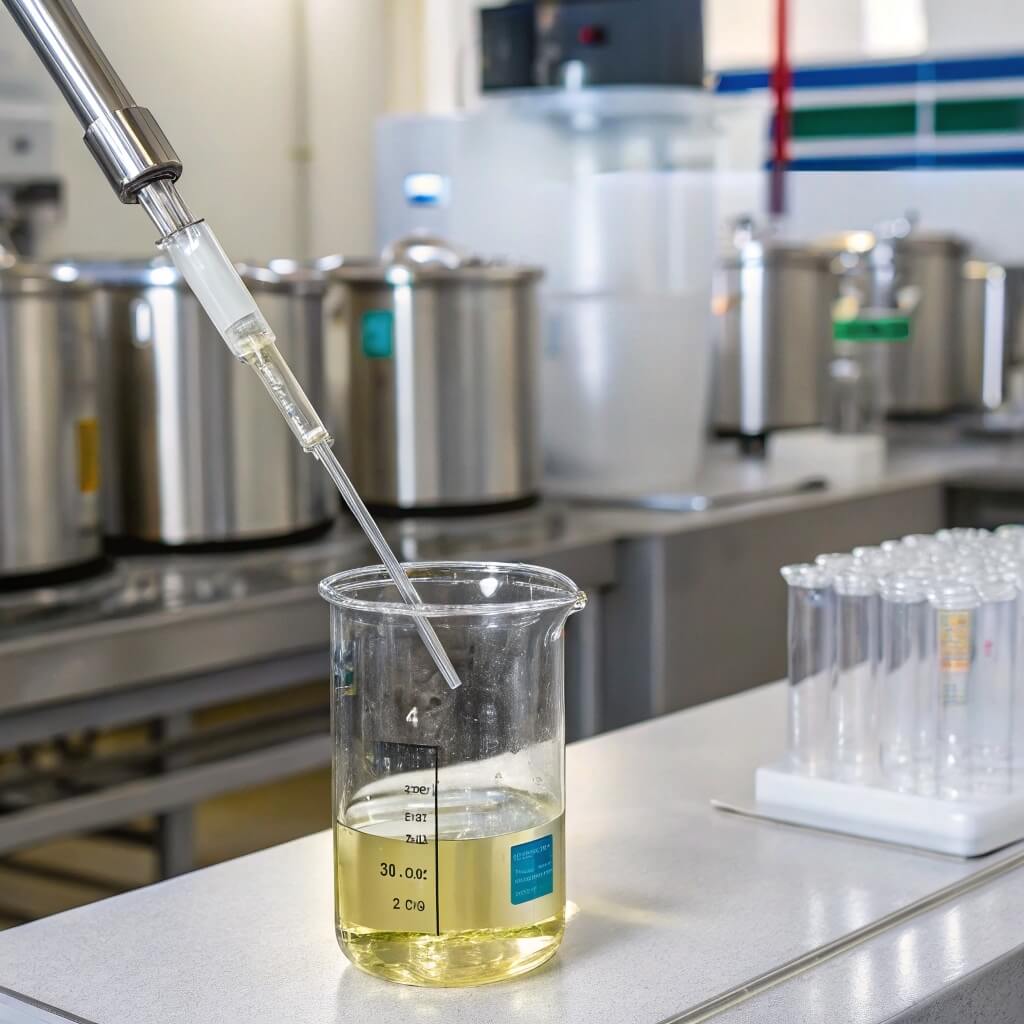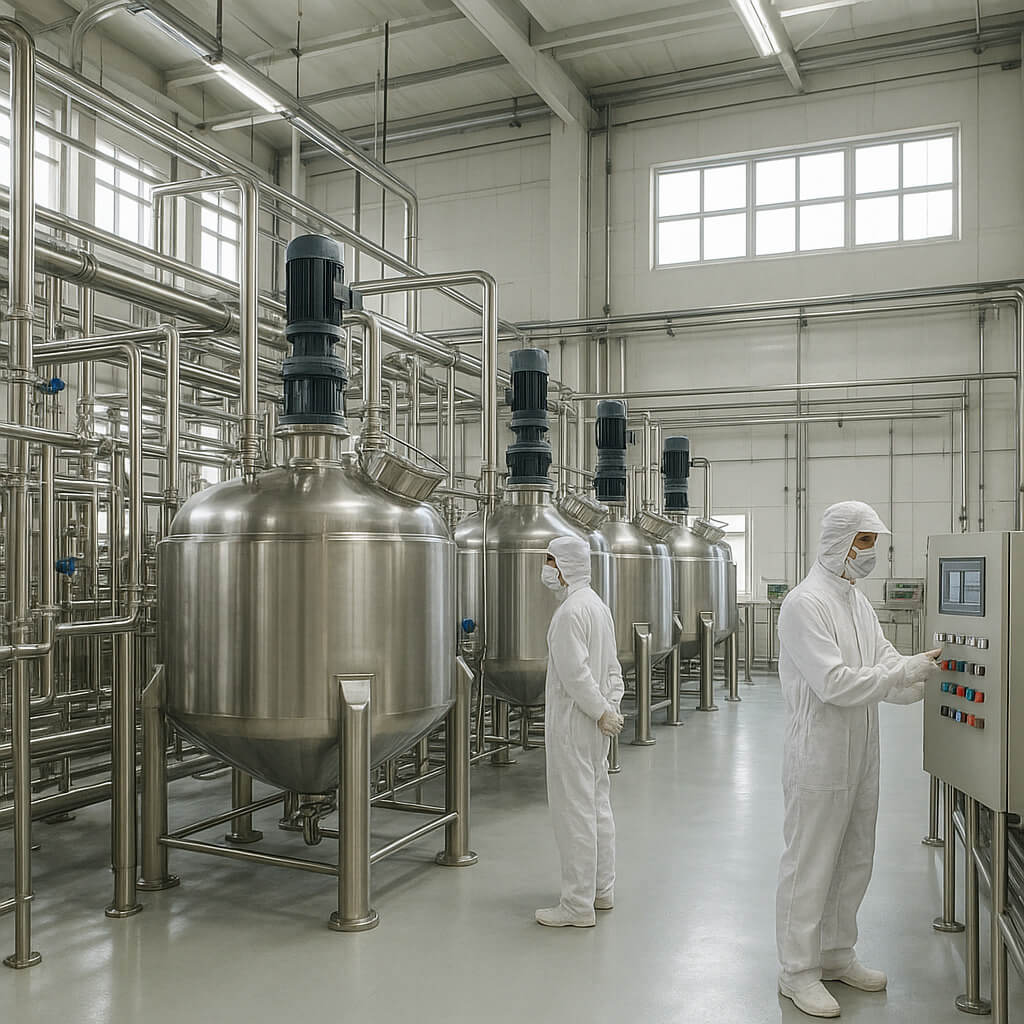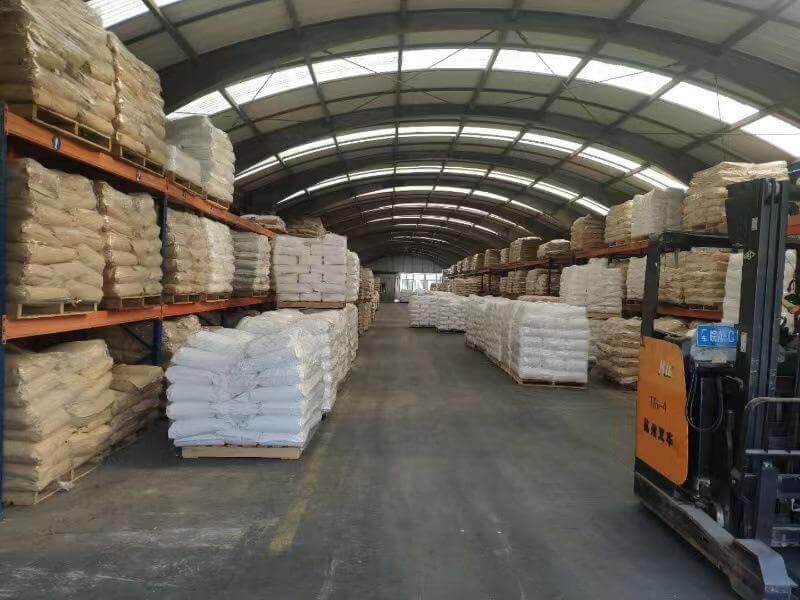Finding the right food additive for your product formulation can be challenging for food manufacturers. Hydroxypropyl methylcellulose (HPMC) grades E15, E50, and E4M offer versatile solutions, but many product developers struggle to match the correct grade with their specific application needs. This mismatch can lead to production delays, inconsistent product quality, and wasted resources on reformulation efforts. HPMC provides exceptional stability, texture control, and functionality across various food systems when properly applied. Based on extensive testing across multiple food categories, the right HPMC grade can reduce production costs by up to 15% while extending shelf life. This article will guide you through the properties, applications, and selection criteria for HPMC grades E15, E50, and E4M to help you make informed decisions for your food products.

1. What is Hydroxypropyl Methylcellulose and How Does it Function in Food?
Hydroxypropyl methylcellulose (HPMC) is a semi-synthetic polymer derived from cellulose. It belongs to the family of cellulose ethers and combines both hydroxypropyl and methyl substitutions on the cellulose backbone. Here’s what makes it special: HPMC has unique thermal gelation properties that set it apart from many other food additives.
The chemical structure of HPMC features a cellulose backbone with methoxyl and hydroxypropyl groups attached. This structure gives HPMC its water solubility and ability to form films. The degree of substitution of these groups determines many of its functional properties.
HPMC works in food systems by forming viscous solutions in cold water. When heated, it undergoes a reversible gel formation process. This thermal gelation property makes it valuable for many food applications where texture control during heating is needed.
| Property | Description | Benefit in Food Applications |
|---|---|---|
| Thermal Gelation | Forms gel when heated, liquefies when cooled | Controls texture during cooking and processing |
| Surface Activity | Reduces surface tension | Stabilizes emulsions and foams |
| Film Formation | Creates flexible, strong films | Improves coating performance and moisture barrier |
| Water Retention | Binds water molecules | Extends shelf life and prevents syneresis |
The different grades of HPMC (E15, E50, E4M) vary primarily in their viscosity and molecular weight. E15 has the lowest viscosity, making it suitable for applications where minimal thickening is desired. E50 offers medium viscosity for balanced thickening and stabilization. E4M provides high viscosity for maximum thickening power.
From a regulatory standpoint, HPMC is approved as a food additive (E464) by major regulatory bodies worldwide. The FDA has granted it GRAS (Generally Recognized As Safe) status, and the European Food Safety Authority (EFSA) has confirmed its safety for food use.
Safety studies have consistently shown HPMC to be non-toxic and non-allergenic. The bottom line is this: HPMC passes through the digestive system largely unabsorbed, making it a safe choice for most consumers, including those with dietary restrictions.
2. How Does HPMC E15 Grade Improve Baked Goods and Pastries?
HPMC E15 grade has become a game-changer in the baking industry due to its low viscosity and excellent functionality. Want to know the real advantage? E15 improves dough handling without making it too sticky or difficult to process.
When added to dough, HPMC E15 modifies its rheological properties by interacting with water and other ingredients. This interaction creates a more elastic and extensible dough that can trap gases better during fermentation. The result is improved volume and a finer crumb structure in the final product.
For gluten-free baking, HPMC E15 is particularly valuable. It mimics some of the viscoelastic properties of gluten, helping to create structure in products that lack this natural protein. This substitution allows for better gas retention during baking.
| Application | HPMC E15 Dosage | Function | Result |
|---|---|---|---|
| Standard Bread | 0.2-0.5% | Dough strengthening | Improved volume, finer crumb |
| Gluten-Free Bread | 1.0-2.0% | Gluten replacement | Better structure, reduced crumbling |
| Cakes | 0.3-0.6% | Batter stabilization | Even cell structure, moisture retention |
| Pastries | 0.2-0.4% | Dough conditioning | Flakier texture, reduced fat absorption |
The moisture retention capabilities of HPMC E15 help baked goods stay fresh longer. By binding water molecules, it slows the staling process and maintains softness. Tests show that bread containing HPMC E15 can maintain acceptable softness for 2-3 days longer than control samples.
When incorporating HPMC E15 into baking formulations, proper mixing techniques are crucial. It should be pre-hydrated in cold water before adding to dry ingredients. This step prevents lumping and ensures even distribution throughout the dough or batter.
A major bakery chain implemented HPMC E15 in their gluten-free bread line and saw a 30% improvement in product volume and a 40% reduction in customer complaints about crumbling. The slight additional ingredient cost was offset by higher customer satisfaction and reduced waste.
3. What Makes HPMC E50 Ideal for Dairy and Frozen Food Products?
HPMC E50 grade offers medium viscosity that provides optimal stabilization for dairy and frozen food applications. You might be surprised to learn that E50 can prevent ice crystal formation in frozen desserts even through multiple freeze-thaw cycles.
In ice cream and frozen desserts, HPMC E50 functions as both a stabilizer and texture modifier. It forms a protective network around ice crystals, preventing them from growing larger during storage. This protection maintains a smooth, creamy texture even after temperature fluctuations.
The stabilization properties of HPMC E50 also prevent whey separation in dairy products. By binding water and creating a weak gel structure, it keeps the product homogeneous throughout its shelf life.
| Product Type | HPMC E50 Dosage | Primary Function | Consumer Benefit |
|---|---|---|---|
| Premium Ice Cream | 0.1-0.3% | Texture stabilization | Creamy mouthfeel, slow melt rate |
| Frozen Yogurt | 0.2-0.4% | Prevent ice crystallization | Smooth texture, reduced iciness |
| Plant-Based Milk | 0.1-0.2% | Suspension stability | No separation, consistent texture |
| Cheese Alternatives | 0.3-0.6% | Structure formation | Improved sliceability, melt properties |
Plant-based dairy alternatives have seen tremendous growth, and HPMC E50 plays a key role in their formulation. It helps suspend plant proteins and fats, preventing separation and creating a texture similar to traditional dairy products. This functionality is crucial for consumer acceptance of these alternatives.
Temperature stability is where HPMC E50 truly shines. Unlike some stabilizers that break down at freezing temperatures or during heat processing, E50 maintains its functionality across a wide temperature range.
A leading plant-based ice cream manufacturer switched to HPMC E50 from a conventional stabilizer blend and reported a 25% improvement in meltdown resistance and significantly higher consumer preference scores for texture and mouthfeel. The change also simplified their ingredient list, supporting clean label goals.
4. Why is HPMC E4M Preferred for Sauces and Dressings?
HPMC E4M grade stands out for its high viscosity and exceptional stability in acidic conditions. The real magic happens when E4M creates a smooth, rich texture in sauces without the heavy mouthfeel often associated with other high-viscosity thickeners.
The thickening power of HPMC E4M comes from its high molecular weight and ability to form strong hydrogen bonds with water molecules. This interaction creates a three-dimensional network that increases viscosity. Unlike starches, this thickening effect remains stable even in acidic environments.
Emulsification capabilities make HPMC E4M particularly valuable for oil-in-water emulsions like salad dressings. It adsorbs at the oil-water interface, reducing interfacial tension and preventing droplet coalescence.
| Sauce/Dressing Type | HPMC E4M Dosage | Key Benefit | Technical Advantage |
|---|---|---|---|
| Tomato-Based Sauces | 0.3-0.6% | Acid stability | Consistent viscosity at pH 3.5-4.5 |
| Oil-Free Dressings | 0.5-0.8% | Body and mouthfeel | Mimics oil texture without calories |
| Emulsified Dressings | 0.2-0.4% | Emulsion stability | Prevents separation for 6+ months |
| Hot Sauces | 0.3-0.5% | Heat resistance | Maintains thickness when heated |
Heat stability is a major advantage of HPMC E4M in sauce applications. Unlike many thickeners that break down when heated, E4M actually forms a stronger gel structure at higher temperatures. This property ensures sauces maintain their consistency during cooking and reheating.
The pH stability of HPMC E4M is equally impressive. It maintains its functionality across a wide pH range (3-11), making it suitable for everything from acidic tomato sauces to alkaline cheese sauces.
HPMC E4M works synergistically with other hydrocolloids to create custom texture profiles. When combined with xanthan gum, it produces a more pseudoplastic flow behavior. Paired with guar gum, it improves freeze-thaw stability.
A major food manufacturer reformulated their premium salad dressing line with HPMC E4M and reported a 40% reduction in product returns due to separation issues. The switch also allowed them to reduce oil content by 15% while maintaining the rich mouthfeel consumers expected.
5. How Can Food Manufacturers Select the Right HPMC Grade for Their Products?
Selecting the appropriate HPMC grade requires careful consideration of multiple factors. Let me share a practical tip: Always test at least two different grades in your actual production environment before making a final decision.
The primary factors to consider when selecting an HPMC grade include the desired viscosity, processing conditions, ingredient interactions, and final product attributes. Each factor plays a crucial role in determining which grade will perform optimally in your specific application.
Viscosity needs vary widely across food applications. Low-viscosity E15 works well when minimal thickening is needed but other functional properties are desired. Medium-viscosity E50 provides balanced functionality. High-viscosity E4M delivers maximum thickening and stabilization.
| Selection Factor | E15 (Low Viscosity) | E50 (Medium Viscosity) | E4M (High Viscosity) |
|---|---|---|---|
| Processing Temperature | Below 70°C | 70-85°C | Above 85°C |
| Shear Conditions | High shear tolerance | Moderate shear tolerance | Low shear tolerance |
| pH Compatibility | 4-8 optimal | 3-9 optimal | 3-11 optimal |
| Desired Mouthfeel | Light, clean | Moderate body | Rich, full-bodied |
Testing methods for HPMC grade selection should include viscosity measurements at application-relevant temperatures, stability testing under expected storage conditions, and sensory evaluation. Pilot-scale production tests are strongly recommended before full implementation.
Cost-benefit analysis must consider not just the price per kilogram of different HPMC grades but also usage rates, processing impacts, and potential for extending shelf life. Higher-grade HPMC may cost more but could require lower usage rates or provide additional functionality.
Common substitution mistakes include selecting solely based on viscosity without considering other functional properties, failing to account for processing conditions, and overlooking potential interactions with other ingredients.
A beverage manufacturer initially selected HPMC E15 for a new plant-based protein drink based only on viscosity requirements. After experiencing stability issues, they tested E50 and found it provided the same viscosity but with superior protein suspension stability, solving their production problem.
6. What Are the Latest Innovations in HPMC Applications for Clean Label Foods?
Clean label trends have pushed manufacturers to position ingredients like HPMC in new ways. What you need to know is HPMC can be listed simply as “cellulose” on ingredient declarations in many regions, supporting clean label goals.
Natural positioning strategies for HPMC focus on its plant-derived origin and physical modification process rather than chemical synthesis. Marketing materials often highlight its sustainable sourcing from renewable plant materials and minimal processing compared to some synthetic alternatives.
Consumer perception studies show that while “hydroxypropyl methylcellulose” sounds chemical and unfamiliar to most consumers, education about its plant origin and safety record significantly improves acceptance.
| Clean Label Strategy | Implementation Approach | Consumer Benefit | Regulatory Consideration |
|---|---|---|---|
| Simplified Naming | Use “cellulose” where permitted | Less intimidating ingredient list | Must comply with regional labeling laws |
| Natural Messaging | Highlight plant origin | Aligns with natural product expectations | Avoid misleading “all-natural” claims |
| Functional Benefits | Focus on “provides texture” rather than “thickener” | Connects ingredient to positive attribute | Claims must be truthful and not misleading |
| Sustainability Story | Emphasize renewable source | Appeals to environmentally conscious consumers | Sustainability claims should be verifiable |
Case studies of successful clean label implementations include a premium bakery that reformulated their gluten-free line using HPMC E15. By focusing on its functional benefits rather than chemical name, they saw a 20% increase in consumer acceptance scores during blind testing.
Another success story comes from a plant-based yogurt manufacturer who replaced a complex stabilizer blend with HPMC E50. This change allowed them to reduce their ingredient list from 15 to 9 items while maintaining product quality, supporting their clean label positioning.
Research into new modified cellulose variants continues, with goals of enhancing functionality while maintaining clean label status. These next-generation products aim to provide even better texture, stability, and processing tolerance while meeting consumer demands for recognizable ingredients.
Conclusion
Hydroxypropyl methylcellulose grades E15, E50, and E4M offer food manufacturers powerful tools for improving product quality across baked goods, dairy alternatives, frozen desserts, and sauces. By understanding the unique properties of each grade, you can select the optimal HPMC variant for your specific application needs. Food producers who properly implement HPMC can achieve up to 40% longer shelf life and 25% better texture scores in consumer testing. Contact Morton’s technical team today for personalized HPMC grade recommendations and application support tailored to your product development challenges. Our food scientists can help you run trials with different HPMC grades to find your perfect match.
FAQ Section
Q1: Is hydroxypropyl methylcellulose (HPMC) safe for consumption?
Yes, HPMC is considered safe for food use by major regulatory bodies worldwide, including the FDA and EFSA. It has GRAS (Generally Recognized As Safe) status in the US and is approved as food additive E464 in Europe. Extensive toxicological studies show it passes through the digestive system largely unabsorbed with no known adverse effects at typical usage levels.
Q2: What are the main differences between HPMC E15, E50, and E4M grades?
The main differences lie in their viscosity and molecular weight. E15 has the lowest viscosity (15 mPa·s in a 2% solution) and is ideal for applications requiring minimal thickening but good film-forming properties, like baked goods. E50 has medium viscosity (50 mPa·s) and works well in dairy and frozen applications. E4M has high viscosity (4,000 mPa·s) and provides maximum thickening power for sauces and dressings.
Q3: Can HPMC be used in organic or natural food products?
While HPMC is not considered organic under most certification standards, it can be used in products marketed as “natural” in many regions. It is plant-derived (from wood pulp) and modified through physical and chemical processes. Some organic standards allow limited use of HPMC in specific applications where no organic alternatives exist, but this varies by certification body and region.
Q4: How does HPMC compare to other common food thickeners and stabilizers?
HPMC offers unique advantages over other thickeners like starches, gums, and pectins. Unlike starches, it remains stable in acidic conditions and during freeze-thaw cycles. Compared to guar or xanthan gum, HPMC provides cleaner flavor release and unique thermal gelling properties. It also offers better film-forming capabilities than most other hydrocolloids, making it superior for moisture barrier applications in foods.
Q5: What are the storage requirements for food products containing HPMC?
HPMC itself is stable under normal storage conditions, but its effects on food products vary by application. Products using HPMC as a stabilizer typically show extended shelf life under recommended storage conditions. For dry HPMC powder, store in a cool, dry place in sealed containers to prevent moisture absorption. Once hydrated in food systems, HPMC maintains its functionality across a wide temperature range, from freezing to cooking temperatures.




